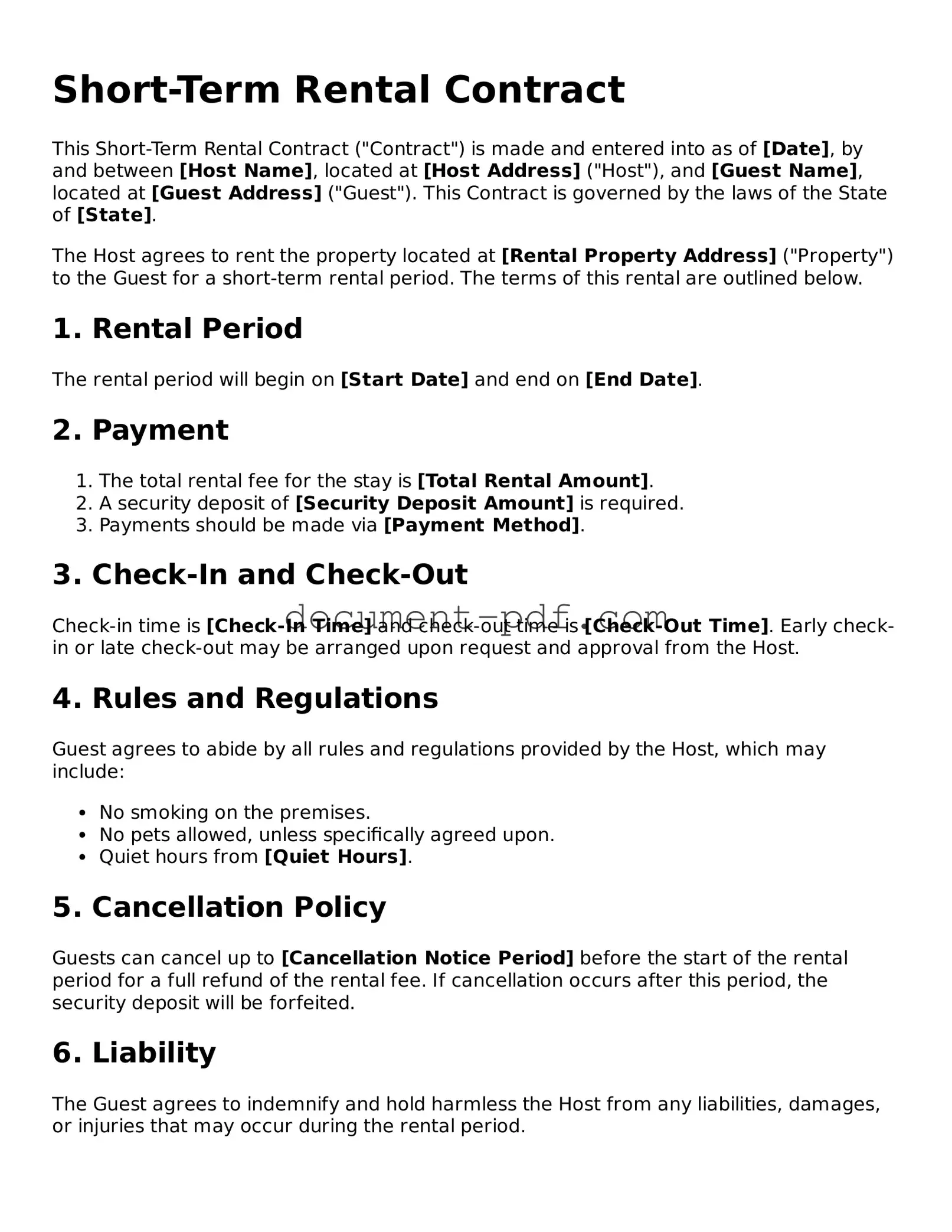Short-Term Rental Contract
This Short-Term Rental Contract ("Contract") is made and entered into as of [Date], by and between [Host Name], located at [Host Address] ("Host"), and [Guest Name], located at [Guest Address] ("Guest"). This Contract is governed by the laws of the State of [State].
The Host agrees to rent the property located at [Rental Property Address] ("Property") to the Guest for a short-term rental period. The terms of this rental are outlined below.
1. Rental Period
The rental period will begin on [Start Date] and end on [End Date].
2. Payment
- The total rental fee for the stay is [Total Rental Amount].
- A security deposit of [Security Deposit Amount] is required.
- Payments should be made via [Payment Method].
3. Check-In and Check-Out
Check-in time is [Check-In Time] and check-out time is [Check-Out Time]. Early check-in or late check-out may be arranged upon request and approval from the Host.
4. Rules and Regulations
Guest agrees to abide by all rules and regulations provided by the Host, which may include:
- No smoking on the premises.
- No pets allowed, unless specifically agreed upon.
- Quiet hours from [Quiet Hours].
5. Cancellation Policy
Guests can cancel up to [Cancellation Notice Period] before the start of the rental period for a full refund of the rental fee. If cancellation occurs after this period, the security deposit will be forfeited.
6. Liability
The Guest agrees to indemnify and hold harmless the Host from any liabilities, damages, or injuries that may occur during the rental period.
7. Governing Law
This Contract shall be governed by and construed in accordance with the laws of the State of [State].
This Short-Term Rental Contract constitutes the entire agreement between the parties. Any modifications or amendments must be in writing and signed by both parties.
IN WITNESS WHEREOF, the parties hereto have executed this Short-Term Rental Contract as of the date first written above.
_______________________________
[Host Name], Host
_______________________________
[Guest Name], Guest
